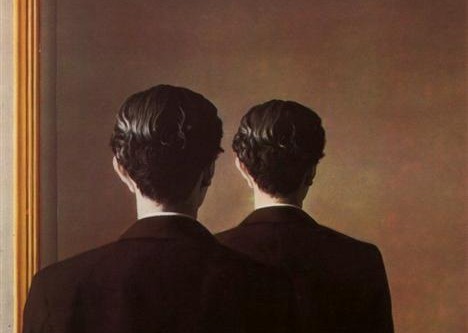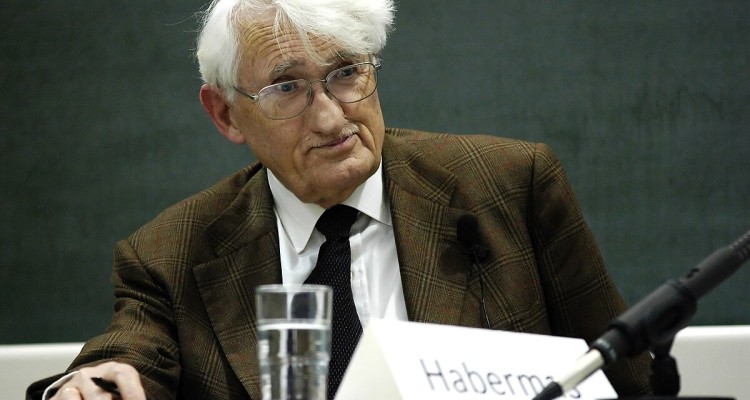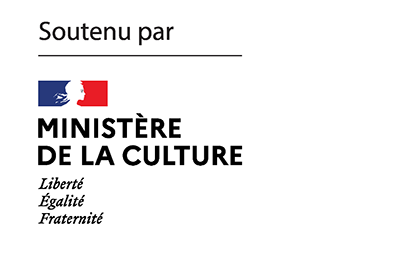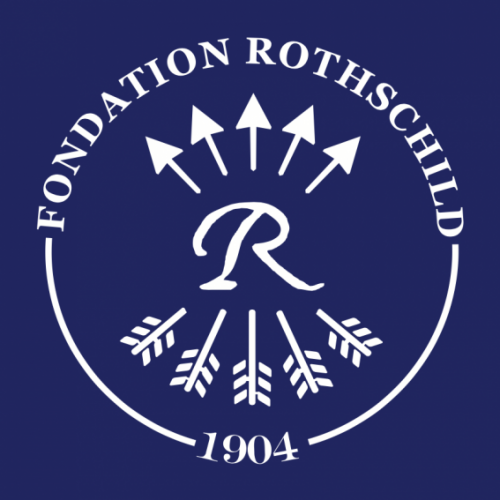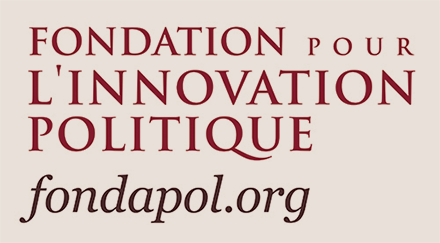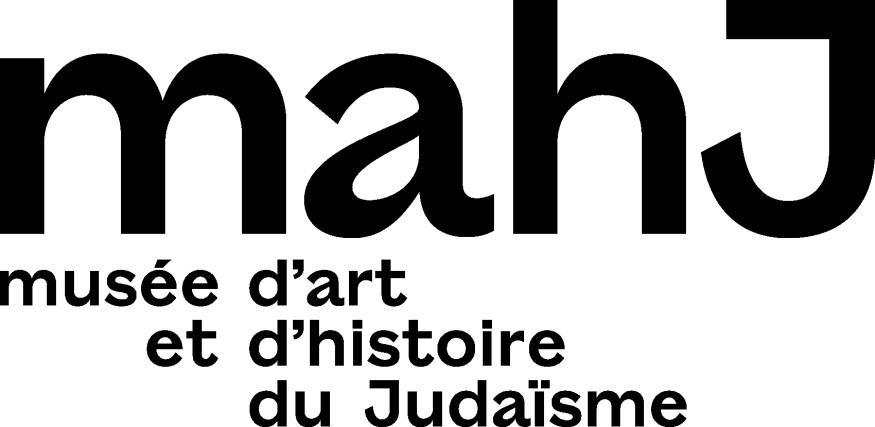Martine Cohen is a sociologist specialising in the evolution of French Judaism. The text she has let us republish in K. is an extract from her recent book: Fin du Franco-judaïsme ? Quelle place pour les Juifs dans une France multiculturelle ? (Presses Universitaires de Rennes, 2022). More precisely, it appears in the chapter “Dissonances politiques”, in which the author identifies the sources of unease that weaken “Franco-Judaism”. This Franco-Judaism crystallised in its new form during the 1980s, in a break with the Israelitism of the 19th century. The growing criticism of Israel in public opinion, and a secularism of openness that has been thwarted since the 2000s, constitute other factors of a weakening. In the rest of the book, the author also analyses the developments that would show, on the contrary, a possible recomposition of a renewed Franco-Judaism.
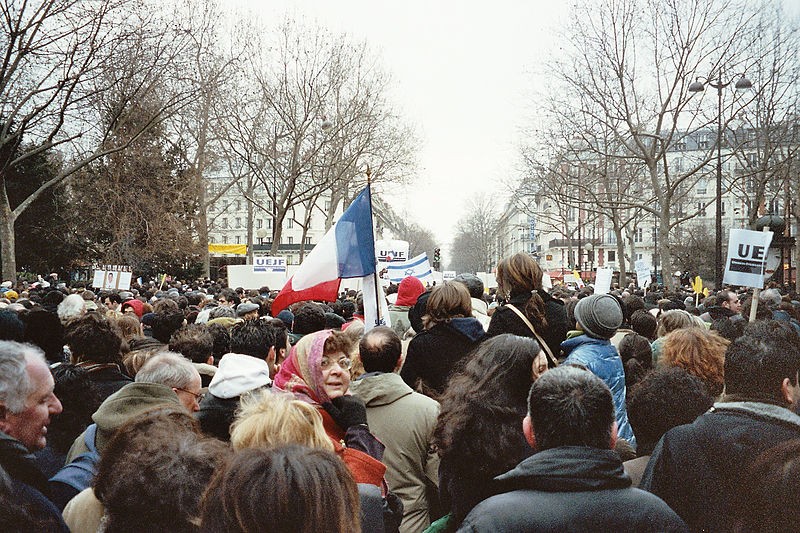
[…] The facts are known: the increase in anti-Jewish acts has been growing, to the point of resulting in murders on several occasions (2006, 2012, 2015, 2017 and 2018), motivated in several cases by the identification of Jews with Israeli domination over the Palestinians. But if these anti-Jewish acts have indeed often been correlated with moments of acute crisis in the Israeli-Palestinian conflict (period of the Intifada, recurrent wars in Gaza), the CNCDH’s analyses also tell us that a “structural” level of hostility towards Jews is now maintained independently of the Middle Eastern crisis, and that it is based on the resurgence of older antisemitic themes, associating “the Jews” with wealth or power. Another classic theme has also reappeared with force, that of the “Jewish conspiracy”: this one unfolds between the “invention” by the Jews of the attacks of September 11, 2001 in the United States and their “power” in banking, the media or political circles. This conspiracy is spreading very quickly thanks to the unprecedented development of social networks since the 2000s. In the face of this, even the repeated court convictions, in which we have seen Jean-Marie Le Pen joined by the new figures of Alain Soral and Dieudonné, seem powerless to stem this tide.
While Jews, under attack from these aggressions or overwhelmed by a feeling of insecurity, are leaving France or migrating to places that are safer in their eyes[1], and others abandon public schools, their feeling of loneliness increases when assassinations, that of Ilan Halimi in 2006 and those of the Otzar Hatorah school in Toulouse in 2012, are not followed by any massive demonstration of indignation, contrasting with what happened during the desecration of the Carpentras cemetery in 1990. Perhaps this is because the general perception of the violence is surprisingly marked, in some of the media reports, by a symmetrical vision of the two populations, Jewish and Maghrebi: does the common expression of “intercommunity” violence imply that Jews would also be at the origin of this violence (towards Muslims), and that the two “communities” and “their” too complex problems should then be sent back to back? Another form of refusal to give antisemitism the attention it deserves is to emphasise that “real” racism is primarily about North African or black populations, or that they are “stigmatised” by accusations of antisemitism against them. The denial is based on the idea that victims of discrimination could not themselves become perpetrators of racist acts – or that psychological and social reasons would somehow exonerate them.
Thus, while politicians may have finally taken the measure of the problem – as evidenced by the creation of the Délégation Interministérielle de Lutte contre le Racisme et l’Antisémitisme (DILCRA) in February 2012 on the eve of Mohammed Merah’s attacks in Montauban and Toulouse – has French society become indifferent, sometimes doubting the reality of this antisemitism when the motive seems to prevail, as was the case for the assassination of Ilan Halimi despite the presence of a classic antisemitic stereotype: the link between Jews and money? Or is it a feeling of weariness or incomprehension and powerlessness in the face of the difficulty of grasping the multiple threads of these anti-Jewish expressions?
Another source of confusion regarding what should or should not be qualified as antisemitism stems from the extreme sensitivity of French society on this topic, due to the Vichy past. It can lead some to denounce acts as “antisemitic” even before they are confirmed by an investigation, while on the other hand others will remain on the reserve and refuse to use this qualification in the name of an exclusively political or ideological definition of the phenomenon: Thus, Théo Klein refused to qualify the attacks of the early years as antisemitic because he did not see any “State policy” (neither “organisation” nor “will to eliminate the Jews”), while Esther Benbassa called for caution in the face of the assassination of Ilan Halimi, which seemed to be nothing more than an act of delinquency. But far from these precautions, others allowed themselves to be overly compared, such as CRIF President Roger Cukierman, who compared the attacks on a Parisian synagogue on rue de la Roquette or on kosher shops in Sarcelles, on the fringes of the July 2014 demonstrations, to a “Kristallnacht” [Night of Broken Glass], adding “we narrowly escaped a real pogrom[2]” In the face of this alarmism from several Jewish institutional leaders, others call instead for a common rediscovery of the “French dream”, as did the Chief Rabbi of France Haïm Korsia in the aftermath of the November 13, 2015 attacks in Paris. But Jewish public figures speaking in this way are rather rare.
This confusion of reference points is echoed by the diversity of researchers’ analyses, which are taken up and disseminated in a more or less faithful or polemical manner in public opinion. Are anti-Jewish acts an echo (“an import”) of the Israeli-Palestinian conflict in France, with young North African-Muslims identifying with Palestinians and attacking those they equate with Israelis (the explicit motive for Merah’s assassinations in a Jewish school in Toulouse in March 2012)? Do they relate first of all to a social problem where relegation to urban ghettos arouses in their inhabitants a feeling of jealousy towards Jews, perceived as those who have “succeeded” and possess “everything” that they do not have[3] ? Others adopt a more general ideological perspective, such as Pierre-André Taguieff when he speaks of the “new Judeophobia”, seeing in it the close association, on a scale largely exceeding France, between the virulent “anti-Zionism” of a part of the extreme left and the fundamental hostility of Islamist circles to the very existence of Israel – an association usually designated by the expression “Islamo-Gauchism[4]”. Two recent books, whose authors situate themselves as close to this extreme left, have analysed and bitterly denounced the charge of antisemitism conveyed by the “anti-Zionism” of their friends, most often implicitly[5]. As for the historian Georges Bensoussan, he emphasises more specifically the part taken by young Muslims from immigrant backgrounds and the retreat of the State in the “lost territories of the Republic[6]”. The historian will later develop the thesis of an ancient “Muslim anti-Semitism”, pre-existing the creation of Israel and the Israeli-Palestinian conflict. While the CNCDH’s opinion studies do not support the thesis of a “new” Judeophobia or an antisemitism of the extreme left, they rather underline the permanence of this antisemitism in extreme right-wing circles[7], the already old study (2005) by Sylvain Brouard and Vincent Tiberj nevertheless supports the idea of a greater disposition of the most practising Muslims towards these antisemitic prejudices[8]. Although many testimonies mention the “Muslim” or “Arab” identity of the perpetrators of these anti-Jewish acts, these testimonies cannot be confirmed or denied by the available statistics: the aggressors are rarely found and no ethnic statistics are allowed. However, a synthetic analysis of the figures allows the sociologist Simon Wuhl to show that the most active of the “hotbeds of antisemitic hatred”, the one from which daily aggressions and murderous attacks originate, is indeed located on the side of Arab-Muslim populations, even if they are far from being the majority of those involved in these demonstrations[9]. This reality is difficult to accept for many, especially among researchers, as if the risk of stigmatising Muslims as a whole, which is certainly real, forbids talking about it.
Muslim antisemitism (possibly combined with extreme left-wing antisemitism) or extreme right-wing antisemitism? New or old? These opposing theories, outlined here in broad strokes, reflect the difficulty of understanding a complex phenomenon through categories of analysis that are too rigid or old. This is the reflection developed by the political scientist Samuel Ghilès-Meilhac in an article published in 2015 in the Revue d’Histoire moderne et contemporaine[10]. He notes on the one hand the hiatus existing between opinion polls showing (according to the CNCDH) that Jews would be the minority group best accepted by French society and the increase in the number of anti-Jewish acts[11]. S. Ghilès-Meilhac also underlines to what extent our usual categories of analysis, opposing “established” to “marginal”, or “integrated” to “discriminated”, prevent us from grasping an antisemitism that today affects perfectly integrated populations that do not suffer any systemic discrimination (Jews), but which are nevertheless the object of attacks from people who are themselves victims of racism. As these oppositions are more particularly favoured by the left, it would be more difficult for them to admit the existence of this antisemitism and to confront it. This type of analysis, which allows us to understand the “divorce” with the left of a part of the Jews of France[12], overlaps with what others denounce in a more controversial tone as the “misguided anti-racism” of the left, for whom only Muslims would be the real victims of racism that should be defended, thereby exonerating these Muslims from their antisemitism. As for the sociologists Michel Wieviorka and Farhad Khosrokhavar, they propose a multifactorial analysis, taking into account both the long history (of anti-Jewish persecutions and the colonial period in particular) and contemporary geopolitical factors (Israeli-Palestinian conflict), in order to understand on the one hand the reciprocal negative perceptions and the feelings of hostility, to call on the other hand for a dialogue between Jews and Muslims and a reformulation of the republican model in the sense of a true opening to the cultural and religious pluralism of society[13].
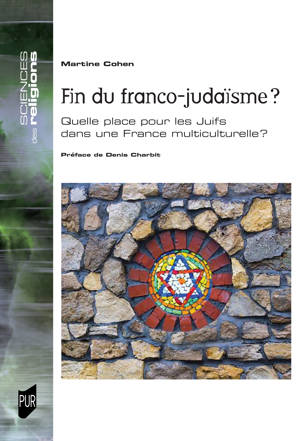
With the feeling of social fragmentation gaining prominence over the 2000s (especially since the 2005 city riots), the theme of “Jewish loneliness[14] “will gradually transform itself to finally bring out the figure of Jews as “sentinels” of a Republic in danger, either because the latter would be defeated in “lost territories”, or because Jews would be the first victims of a battle waged more widely against France by Muslims or Islamists. Would the terrorist attacks of 2015, those of January (against the newspaper Charlie Hebdo and the Hyper-cacher shop) and even more those of November, which were aimed at non-specifically targeted populations (“innocents”, as it were), have played in the direction of this (re-)inclusion of Jews in the “family picture” of French society? The argument was already stated in fact before 2015. The philosopher and essayist Alain Finkielkraut, after having adopted the theme of the “great replacement”, associated it in 2012 with that of a “new Franco-Judaism”, based no longer on the positive idea of a Judeo-French symbiosis but on a community of unfortunate destiny between Jews and France: to attack Jews is to target France[15].
If we can speak here of a paradoxical Franco-Judaism because it is “victimary”, we can only be struck also by this attempt to break the feeling of solitude of the Jews by placing them “at the centre” of a battle to be waged, both to save the Republic (threatened by fragmentation and in its fundamental values) and to save the very idea of a France (an ideal France) that would always be the friend of the Jews. The institutional leaders and Jewish intellectuals recognise the considerable efforts made by the State to protect them (even if their efficiency seems limited) and some of them engage in meetings with various sectors of society (religious actors in particular) who do not fail to express their sympathy during the attacks. Thus, if there is antisemitism in France, France itself would not be antisemitic[16].
Is this theme of Jews as “sentinels of the Republic” likely, if not to restore total confidence, at least to limit the departure of Jews from France? Nothing is less certain! However, it was observed that some Jews who wanted to escape the insecurity of their neighbourhoods decided to move to places that were safer in their eyes, to stay in France. We also note that some leaders of organised Judaism speak of an “aliyah from within”, establishing a parallel with the aliyah (“ascent”) to Israel, and thus seem to grant a paradoxical positivity to these moves, as if France remained in their eyes a land of welcome, … a land still “promised”?
From the slogan “I am Jewish” which accompanied the “I am Charlie” or “I am Muslim” during the demonstration of 11 January 2015, to the “White March” of March 2018 in memory of Mireille Knoll, this old woman survivor of deportation murdered by one of her neighbours who allegedly shouted “Allahou Akbar!”, would the new public manifestations of empathy expressed towards Jews testify to a renewed link between the Jews and France ? Jews would thus no longer be alone but would have become the heart of a fragmented France and of a battle to rebuild social cohesion[17]? But the risk of such a “central” position of the fight against anti-Semitism is that, far from concerning all French people, it is perceived as an expression of competition with other victims of discrimination, and that it could even paradoxically “prove” the “power of the Jews”. This would be one of the weaknesses of this “Franco-Judaism of victims”.
“Defending Israel” (beyond possible disagreements on its policy), “saving France”: can we see here the new terms of another “double loyalty”, whose dramatic and defensive tone refers to the contexts of political crisis that the French and Israeli societies are experiencing (a start-up nation, certainly, but blocked in front of an impossible peace). In France, would the persistence of acts of anti-Semitism be one of the symptoms of an unprecedented social, moral and political crisis[18] ?
Martine Cohen
Martine Cohen is a sociologist. Her work has focused on the French Catholic charismatic movement and on the social controversy surrounding cults. An observer of French Judaism since the 1980s, she takes a fresh look at its history and its future in France.
Notes
| 1 | See the book by Fourquet Jérôme and Manternach Sylvain, L’An prochain à Jérusalem? Paris, éd. de l’Aube/Fondation Jean-Jaurès, 2016. |
| 2 | The UDI deputy Meyer Habib also spoke of a “Night of Broken Glass” in relation to these outbursts on 13 July 2014 (interview given on 14 July on an Israeli television channel and reported by Lefigaro. fr, 21/7/14). By their excesses, these officials reinforce a “competition of victims” and the “instrumentalisation” of the memory of the Shoah that they nevertheless denounce ? others. |
| 3 | This is the thesis of the sociologist D. Lapeyronnie: Lapeyronnie Didier, Ghetto urbain. Ségrégation, violence, pauvreté en France aujourd’hui, Paris, Robert Laffont, 2008. For him, identification with the Palestinians would only come second, to reinforce the feeling of victimhood. An earlier study by the sociologist Michel Wieviorka already underlined the essentially social dimension of these anti-Jewish acts, cf. La tentation antisémite. Haine des juifs dans la France d’aujourd’hui, Paris, Robert Laffont, 2005. |
| 4 | Taguieff Pierre-André, La nouvelle judéophobie, Paris, Mille et Une Nuits, 2002. |
| 5 | Stora Brigitte, Que sont mes amis devenus? Les Juifs, Charlie, puis tous les nôtres, Lormont, éd. Le Bord de l’eau, 2016, and Hirsch Robert, Sont-ils toujours des Juifs allemands? La gauche radicale et les Juifs depuis 1968, Paris, Arbre bleu éd., 2017. |
| 6 | Brenner Emmanuel (alias Georges Bensoussan), Les territoires perdus de la République : antisémitisme, racisme et sexisme en milieu scolaire, Paris, Mille et Une Nuits, 2002 (3e éd. augmentée, Paris, Pluriel, 2015). |
| 7 | Pierre Birnbaum, a historian of the anti semitic movements of the end of the 19th century, also insists on the persistence of this old right-wing antisemitism in today’s France. See his book Sur un nouveau moment antisémite : Jour de colère, Paris, Fayard, 2015. |
| 8 | Brouard Sylvain and Tiberj Vincent, Des Français comme les autres ? Enquête sur les citoyens d’origine maghrébine, africaine et turque, Paris, Presses de Sciences Po, 2005. |
| 9 | Wuhl Simon, “Les trois foyers de la haine antisémite en France” (The three hotbeds of antisemitic hatred in France), Plurielles, n° 22, 2020, p. 149-182. |
| 10 | Ghilès-Meilhac Samuel, “Mesurer l’antisémitisme contemporain: enjeux politiques et méthode scientifique”, dossier “Antisémitisme(s): un éternel retour?” coordinated by Marie-Anne Matard-Bonucci, Revue d’Histoire moderne et contemporaine, 2015, tome 62, n°2/3, p. 201-224. |
| 11 | The CNCDH’s annual surveys also show that this good acceptance of Jews would not prevent the persistence of old stereotypes about their relationship to money and power. |
| 12 | A dossier published in Médiapart in February 2018 evokes the unease “of the lefts” in front of this antisemitism. Three articles are proposed by Joseph Confavreux: “Antisemitism: The suspected lefts. La genèse d’une gêne”, 10 February 2018; “Aveugles à un ‘antisémitisme musulman’ ?”, 11 February 2018; and “Antisémitisme, antisionisme : comment, à gauche, sortir du piège”, 14 February 2018. See also the analysis of Fourquet Jérôme and Manternach Sylvain L’An prochain à Jérusalem? op. cit. |
| 13 | See their book Les juifs, les musulmans et la République, Paris, Robert Laffont, 2017. |
| 14 | The theme is recurrent in press articles and radio broadcasts. Shmuel Trigano made it the title of a book published in February 2015, Quinze ans de solitude. Juifs de France: 2000-2015 (Paris, Berg International). |
| 15 | To my knowledge, Alain Finkielkraut first expressed this thesis of a “new Franco-Judaism” (sic) on 14 October 2012, during a conference organised by the Bnaï Brith for the tenth anniversary of the publication of the book The Lost Territories. See also his book L’identité malheureuse (Paris, Stock, 2013). |
| 16 | This is what Elie Barnavi writes in his Lettre ouverte aux Juifs de France (op. cit., 2002). |
| 17 | Many government officials take up the theme of a France “that would not be France without the Jews”; we remember in particular Manuel Valls’ speech after the January 2015 attacks. |
| 18 | The trivialisation of verbal and physical violence is well analysed by the writer Marc Weitzmann in his essay Un temps pour haïr (Paris, Grasset, 2018). |

